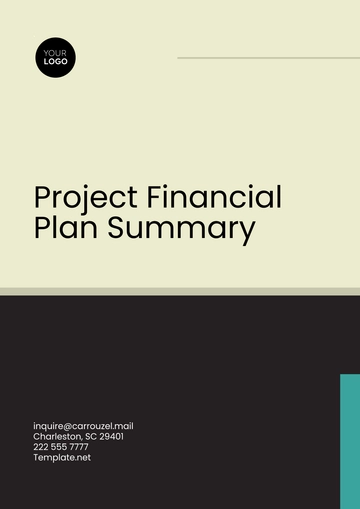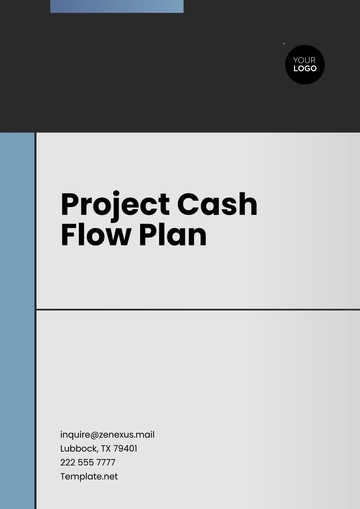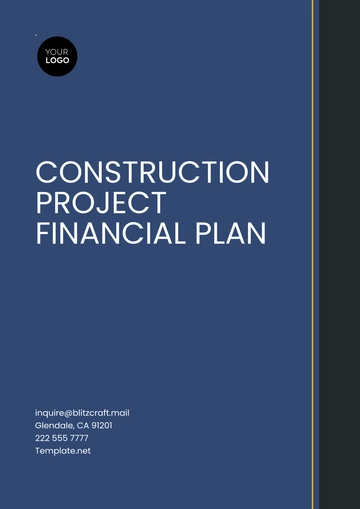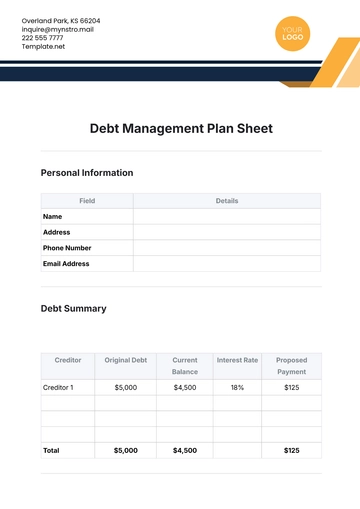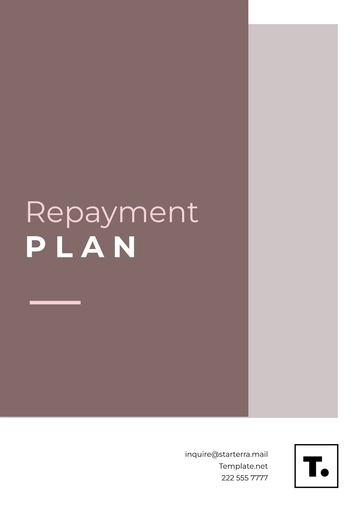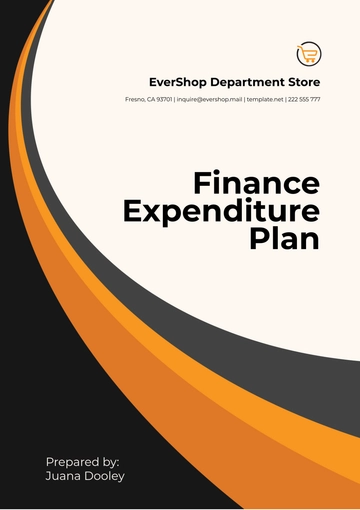Free College Financial Plan

I. Introduction
This College Financial Plan is designed to assist [Your Name] and their family in effectively managing the financial aspects of their college education. By outlining projected expenses, available resources, and funding strategies, this plan aims to provide a comprehensive framework for financing [Your Name]'s academic journey.
II. Personal and Family Information
Student Name: [Your Name]
Parent/Guardian Name(s): [Mother's Name], [Father's Name]
Contact Email: [Your Email]
Contact Phone Number: [Your Company Number]
III. College Selection
[Your Name] intends to pursue their undergraduate degree at XYZ University. This section outlines the estimated costs associated with attending this institution.
College/University: XYZ University
Expected Start Date: September 2050
Anticipated Graduation Date: May 2054
IV. Financial Projections
Below are the projected expenses and available resources for financing [Your Name]'s college education:
Category | Estimated Cost ($) |
|---|---|
Tuition and Fees | $15,000 |
Room and Board | $10,000 |
Books and Supplies | $1,500 |
Personal Expenses | $2,000 |
Transportation | $1,200 |
Miscellaneous | $800 |
Total Expenses | $30,500 |
V. Sources of Funding
[Your Name] plans to utilize the following sources to cover their college expenses:
Scholarships: Academic Excellence Scholarship ($5,000), XYZ University Grant ($3,000)
Grants: Federal Pell Grant ($6,000), State Grant ($2,000)
Federal Student Aid: Direct Subsidized Loan ($4,000), Direct Unsubsidized Loan ($3,000)
State Student Aid: State Grant ($2,000)
Private Student Loans: ABC Bank Private Loan ($5,500)
Personal Savings: $3,000
Work-Study Programs: On-campus work-study program (Estimated earnings: $2,000 per year)
VI. Expected Family Contribution (EFC)
Taking into consideration the information that has been provided, it has been determined that the Expected Family Contribution (EFC) amounts to $8,000. This amount will be incorporated into the calculations for determining financial aid eligibility.
VII. Funding Gap Analysis
After taking into account all the expenditures and the available resources, it has been determined that there exists a shortfall in funding amounting to $2,500. Methods and strategies to bridge this funding gap will be explored and detailed in the subsequent section.
VIII. Financial Aid Strategies
To bridge the funding gap and minimize student debt, the following strategies will be implemented:
Maximizing Scholarships and Grants: Continuously apply for additional scholarships and grants.
Exploring Alternative Funding Sources: Research additional financial aid options such as external scholarships and sponsorships.
Budgeting and Cost-saving Measures: Implement a strict budget for personal expenses and explore cost-saving measures for textbooks and supplies.
Student Employment: Plan for part-time employment during college to supplement income.
IX. SWOT Analysis
A SWOT (Strengths, Weaknesses, Opportunities, Threats) analysis has been conducted to assess the financial situation:
Strengths | Weaknesses | Opportunities | Threats |
|---|---|---|---|
- Strong academic record | - Limited savings | - Potential for additional scholarships | - Rising tuition costs |
- Supportive family network | - Reliance on loans | - Access to work-study programs | - Economic downturn |
X. Conclusion
In conclusion, this College Financial Plan provides a roadmap for [Your Name] and their family to navigate the financial aspects of college education. By leveraging available resources and implementing strategic financial aid strategies, [Your Name] can pursue their academic goals while minimizing financial burden.
- 100% Customizable, free editor
- Access 1 Million+ Templates, photo’s & graphics
- Download or share as a template
- Click and replace photos, graphics, text, backgrounds
- Resize, crop, AI write & more
- Access advanced editor
Introducing the College Financial Plan Template, meticulously designed by Template.net for comprehensive financial planning and budgeting for students. This customizable document empowers college students and their families to organize and manage educational expenses effectively. With editable features and a user-friendly layout, it facilitates tailored financial planning to track tuition, fees, living expenses, and financial aid. Streamline your financial management process and gain valuable insights into budgeting for college. Elevate your financial preparedness with this versatile template, your essential tool for achieving academic goals while maintaining financial stability.
You may also like
- Finance Plan
- Construction Plan
- Sales Plan
- Development Plan
- Career Plan
- Budget Plan
- HR Plan
- Education Plan
- Transition Plan
- Work Plan
- Training Plan
- Communication Plan
- Operation Plan
- Health And Safety Plan
- Strategy Plan
- Professional Development Plan
- Advertising Plan
- Risk Management Plan
- Restaurant Plan
- School Plan
- Nursing Home Patient Care Plan
- Nursing Care Plan
- Plan Event
- Startup Plan
- Social Media Plan
- Staffing Plan
- Annual Plan
- Content Plan
- Payment Plan
- Implementation Plan
- Hotel Plan
- Workout Plan
- Accounting Plan
- Campaign Plan
- Essay Plan
- 30 60 90 Day Plan
- Research Plan
- Recruitment Plan
- 90 Day Plan
- Quarterly Plan
- Emergency Plan
- 5 Year Plan
- Gym Plan
- Personal Plan
- IT and Software Plan
- Treatment Plan
- Real Estate Plan
- Law Firm Plan
- Healthcare Plan
- Improvement Plan
- Media Plan
- 5 Year Business Plan
- Learning Plan
- Marketing Campaign Plan
- Travel Agency Plan
- Cleaning Services Plan
- Interior Design Plan
- Performance Plan
- PR Plan
- Birth Plan
- Life Plan
- SEO Plan
- Disaster Recovery Plan
- Continuity Plan
- Launch Plan
- Legal Plan
- Behavior Plan
- Performance Improvement Plan
- Salon Plan
- Security Plan
- Security Management Plan
- Employee Development Plan
- Quality Plan
- Service Improvement Plan
- Growth Plan
- Incident Response Plan
- Basketball Plan
- Emergency Action Plan
- Product Launch Plan
- Spa Plan
- Employee Training Plan
- Data Analysis Plan
- Employee Action Plan
- Territory Plan
- Audit Plan
- Classroom Plan
- Activity Plan
- Parenting Plan
- Care Plan
- Project Execution Plan
- Exercise Plan
- Internship Plan
- Software Development Plan
- Continuous Improvement Plan
- Leave Plan
- 90 Day Sales Plan
- Advertising Agency Plan
- Employee Transition Plan
- Smart Action Plan
- Workplace Safety Plan
- Behavior Change Plan
- Contingency Plan
- Continuity of Operations Plan
- Health Plan
- Quality Control Plan
- Self Plan
- Sports Development Plan
- Change Management Plan
- Ecommerce Plan
- Personal Financial Plan
- Process Improvement Plan
- 30-60-90 Day Sales Plan
- Crisis Management Plan
- Engagement Plan
- Execution Plan
- Pandemic Plan
- Quality Assurance Plan
- Service Continuity Plan
- Agile Project Plan
- Fundraising Plan
- Job Transition Plan
- Asset Maintenance Plan
- Maintenance Plan
- Software Test Plan
- Staff Training and Development Plan
- 3 Year Plan
- Brand Activation Plan
- Release Plan
- Resource Plan
- Risk Mitigation Plan
- Teacher Plan
- 30 60 90 Day Plan for New Manager
- Food Safety Plan
- Food Truck Plan
- Hiring Plan
- Quality Management Plan
- Wellness Plan
- Behavior Intervention Plan
- Bonus Plan
- Investment Plan
- Maternity Leave Plan
- Pandemic Response Plan
- Succession Planning
- Coaching Plan
- Configuration Management Plan
- Remote Work Plan
- Self Care Plan
- Teaching Plan
- 100-Day Plan
- HACCP Plan
- Student Plan
- Sustainability Plan
- 30 60 90 Day Plan for Interview
- Access Plan
- Site Specific Safety Plan

